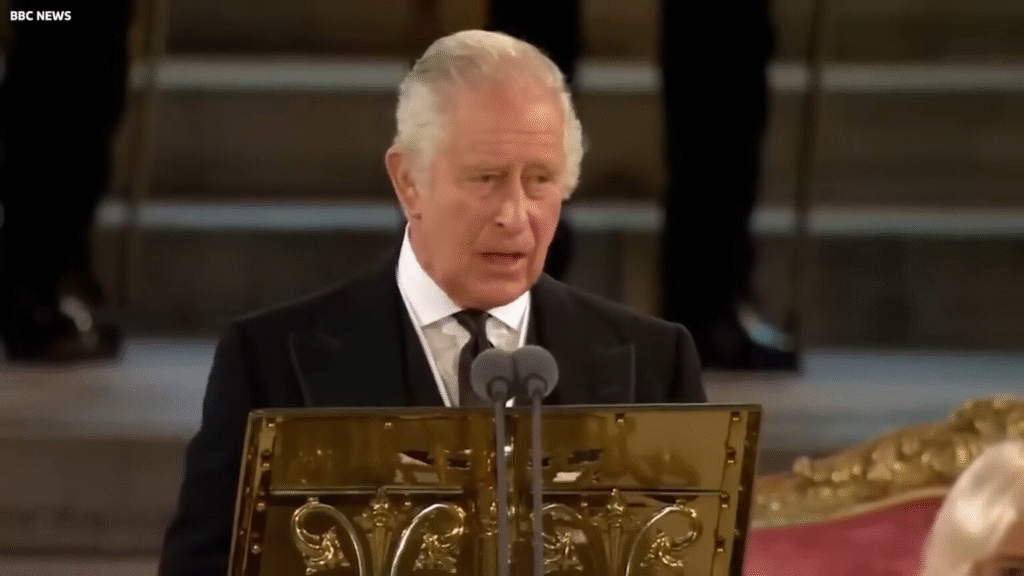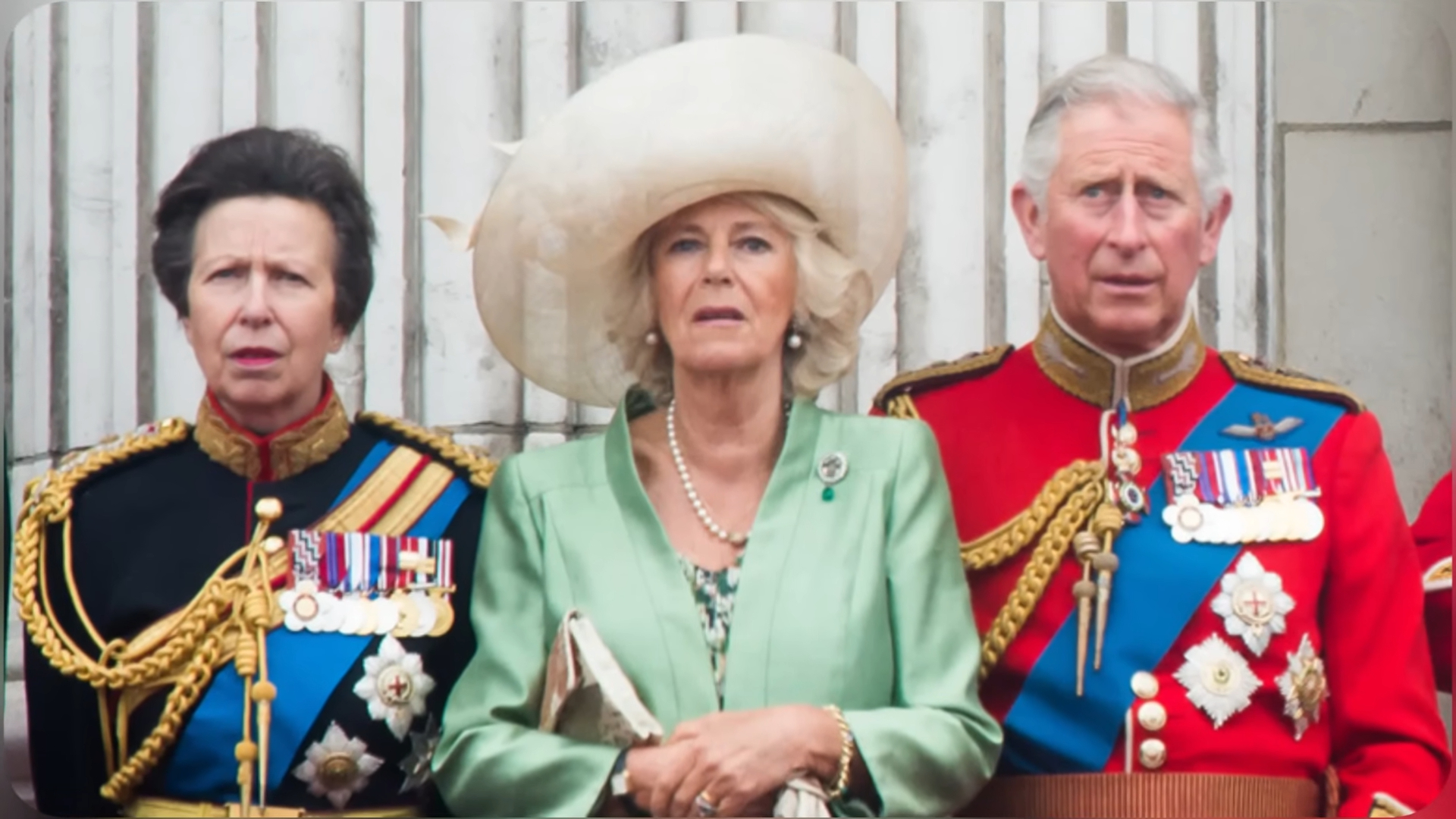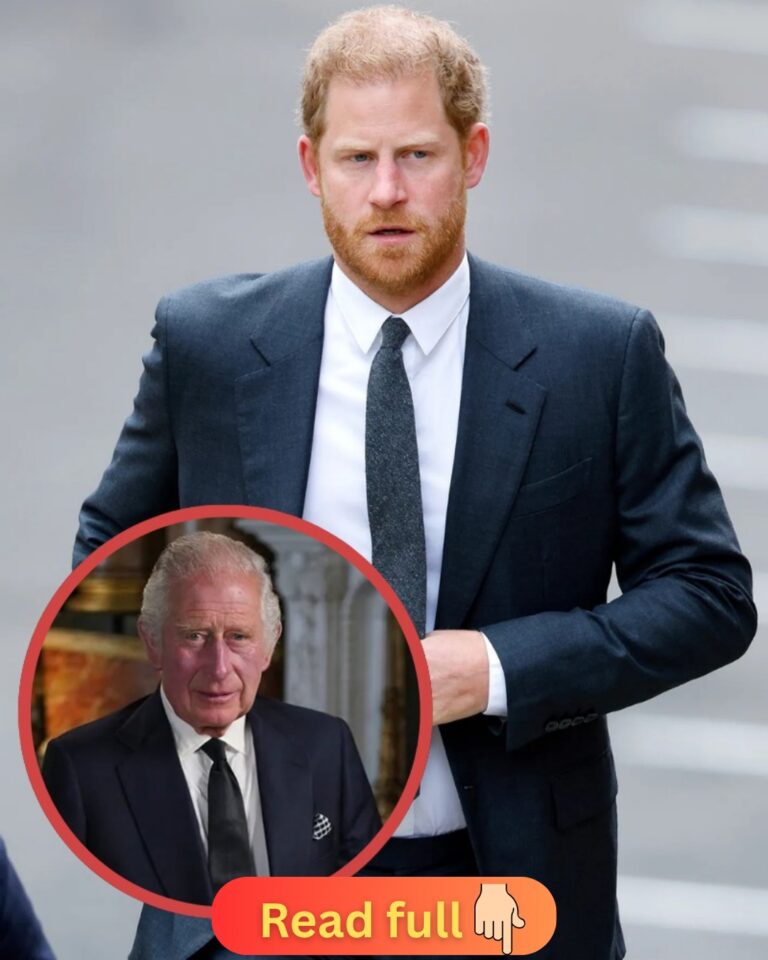Just In: Queen Camilla’s Name Mysteriously REMOVED From Royal Decree Signed by King Charles & Princess Anne – What’s Happening.
At precisely 9:43 a.m. , a royal decree was quietly dispatched from King Charles’s study.
At first glance, it appeared to be just another official document.
However, eagle-eyed observers quickly noticed one glaring omission: the name of Queen Camilla.

This absence was not an oversight but a deliberate decision confirmed by palace insiders.
The decree, co-signed by King Charles and Princess Anne, outlined the monarchy’s new structure, listing only four names: Charles, Anne, William, and Catherine.
Camilla’s name was completely absent.
This was a historic moment.
For the first time in modern royal history, a queen consort was deliberately excluded from such a key document.
Traditionally, the queen consort’s name is included as a symbol of stability, tradition, and unity within the royal family.
This time, however, Camilla was erased—not due to scandal or controversy, but because the palace is pursuing a new vision: a leaner, more focused monarchy.
Camilla, it seems, no longer fits into this streamlined plan.
The signatures on the decree underscore the gravity of the decision.
King Charles signed alongside Princess Anne, a figure known for her unwavering dedication to duty over personal sentiment.
By joining her signature with his, Charles signaled that this was a strategic move about the future of the crown, not a personal slight.
This act redefines where the real power lies within the royal family.
The silence that followed was deafening.
No public statement, no explanation—only the document and a missing name that spoke volumes.
Camilla, once regarded as King Charles’s closest ally, has been quietly sidelined.
Palace insiders described the event as a “quiet earthquake,” subtle yet profoundly destabilizing.
This change doesn’t just remove a name; it alters the monarchy’s trajectory.
To understand why this happened, one must look behind the scenes at the silent power struggles that shaped this moment.
Princess Anne, often overshadowed by more glamorous royals, has steadily become the most influential figure within the palace walls.
While the world’s attention has been fixed on King Charles and Camilla, Anne has been quietly consolidating power through consistent service, discipline, and unyielding loyalty to the crown’s traditions.

When King Charles ascended the throne following Queen Elizabeth II’s passing, the monarchy faced a crossroads.
The late Queen left behind a legacy of strict discipline and devoted service, setting a high bar for her successors.
To maintain the institution’s relevance and stability, the monarchy needed a steady hand—someone who could balance modernization with tradition without succumbing to the distractions of public opinion or scandal.
Princess Anne stepped into this role with quiet resolve.
Anne took on responsibilities that others avoided, from state functions to military duties and diplomatic engagements.
She did not seek the limelight but became the monarchy’s anchor amid turbulent times.
Charles, burdened with the demands of kingship, relied heavily on her steadfastness.
Unlike other royals who occasionally withdrew from duties or faced controversies, Anne remained reliable, embodying the values of restraint and loyalty.
Within palace circles, she earned the nickname “the steel within the crown” for her unflinching presence and influence.
Anne’s approach to reform has been subtle but effective.
She champions change not through public declarations but through private insistence, understanding the delicate balance between preserving the monarchy’s mystique and adapting to modern expectations.
Where Camilla sought to expand her public profile and ceremonial roles, Anne worked to limit such expansions, emphasizing duty over display.
Central to this dynamic is the distinction between queen consort and queen—a line Queen Elizabeth II carefully maintained.
Camilla was to be a queen consort, a role defined by support rather than authority.
When these boundaries blurred, Anne was the one who reasserted them, using policy and now official documents to draw clear lines.
In a royal family often fractured by personal rivalries and emotions, Anne stands as the unshakable constant.
Her rise to power was not driven by ambition but necessity.
She remains the only senior royal untouched by scandal or doubt, making her indispensable in a monarchy seeking certainty in uncertain times.

While Anne’s influence grows, Camilla’s role has been steadily diminished.
Once a visible partner to Charles, Camilla now faces a quiet exclusion.
Her name vanishing from official documents is just one sign.
She has been left out of key meetings, her duties reassigned, and her presence at state functions reduced.
Her office, once integrated with Buckingham Palace operations, now operates almost in isolation.
Communications to her arrive late or not at all, and senior staff have been reassigned away from her team.
What was once a seamless role in the monarchy’s daily workings has become fragmented and distant.
Despite maintaining a dignified public persona, insiders note a marked change in Camilla’s demeanor—her once confident presence now tinged with weariness.
Her influence is shrinking, and the silence surrounding her exclusion speaks louder than any official statement could.
The gradual nature of this sidelining is deliberate.
No dramatic confrontations or public battles have occurred—only a slow, strategic retreat.
Ceremonial roles traditionally associated with the queen consort have been quietly reassigned to Princess Catherine.
Patronages once championed by Camilla have been reviewed and passed on.
In recent months, Camilla has attempted to reassert herself, increasing public engagements and lobbying for expanded duties.
However, these efforts have been largely ineffective against the tide of institutional change.
The monarchy is moving forward without her.
Her diminishing role is a poignant contrast to the decades she spent overcoming public disapproval and scandal to secure her place beside Charles.
Now, she faces a different kind of challenge: being phased out not by controversy but by calculated strategy.
The personal cost is immense.
Charles, who stood by Camilla through turbulent times, now finds himself signing away her role in the monarchy’s future.
His love and loyalty, once seen as unbreakable, have yielded to the demands of duty and legacy.
The public reaction to Camilla’s erasure has been swift and polarized.
Some view it as a necessary correction, restoring the monarchy’s focus and honoring Queen Elizabeth’s vision.
Others see it as a harsh and unjust sidelining of a woman who endured relentless scrutiny and emerged resilient.
Polls indicate strong public support for Princess Anne’s role and the monarchy’s new direction, while Camilla’s approval ratings have declined sharply.

Behind the scenes, Camilla is not resigned to silence.
Sources reveal she is regrouping, consulting with trusted allies and planning a measured response.
Her absence from public life is strategic—a pause before a potential comeback or a graceful exit.
Rumors suggest she is reaching out to sympathetic journalists to craft a counternarrative—one that portrays her not as a discarded figure but as a loyal partner weathering the pressures of monarchy.
The palace watches closely, wary of any moves that could disrupt the fragile new order.
Tensions within the family are rising, with William and Catherine assuming many of Camilla’s former responsibilities, and Charles caught between personal loyalty and institutional demands.
Camilla’s next steps could redefine her legacy and impact the monarchy’s future.
Whether she chooses to quietly withdraw or assert her voice, the world will be watching.
The monarchy’s new blueprint centers on four pillars: King Charles, Princess Anne, Prince William, and Princess Catherine.
This streamlined core represents a shift from a sprawling royal family to a focused institution built on purpose, loyalty, and strategic necessity.
The days of broad ceremonial roles and extended family involvement are giving way to a model demanding accountability and visibility.
Camilla’s removal symbolizes this transformation—a monarchy evolving not just to survive but to thrive in the modern era.
Her story is a reminder that royal life is as much about power and politics as it is about tradition and ceremony.
As the monarchy turns a new page, Camilla’s fate remains a compelling narrative of love, loyalty, loss, and resilience.
The world waits to see if she will accept her sidelining or make a final, unforgettable move to reclaim her place in history.
Drop your thoughts in the comments, and stay tuned for further updates on this unfolding royal drama.





